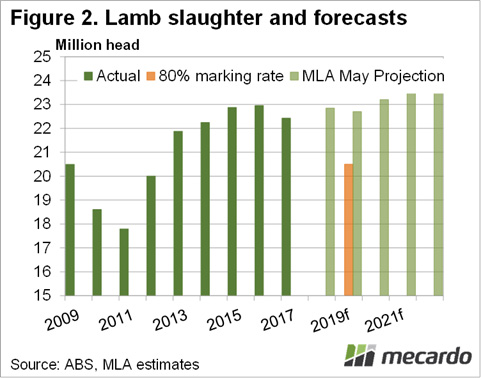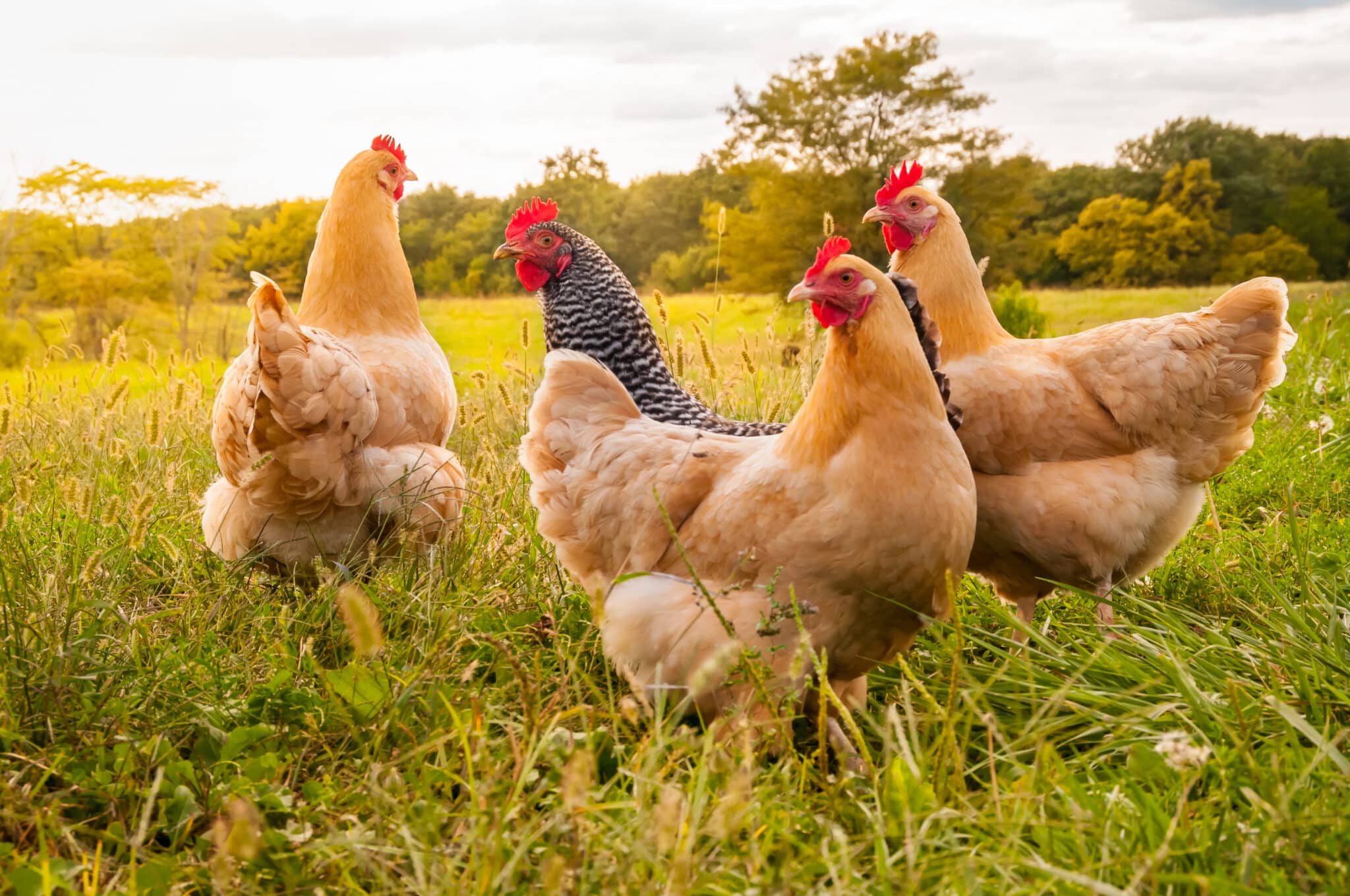Dry weather in New South Wales, northern South Australia and Victoria is impacting the timing of the turnoff of winter sucker lambs. The question is, how will the dry impact total lamb supply for 2018?
The worry we’ve been hearing about, is that NSW lambs which weren’t at slaughter weights as suckers are going to flood the market in Spring and early Summer, competing with suckers from the south. Obviously, the concern for the thus far fortunate southern lamb producers, is that prices will be much weaker as supply overcomes demand.
The theory behind this is sound, however, it doesn’t take into account the fact that in drought fewer lambs are going to be produced in total.
There have been some shocking lamb marking anecdotes from western NSW. These range from 30 lambs from 1000 ewes (3%) to marking rates up to 20%. Over the last few years marking rates for these areas has been 80-100%. MLA’s sheep flock distribution map indicates that western NSW was home to 2.5 million head of sheep in 2016.
The national breeding ewe proportion of the flock is 55%. At 100% marking rates, there are 1.37 million ewes in western NSW producing 1.37 million lambs. At 20% the number of lambs is 275,000 head, and at 50% it is 687,000. There is likely to be between 500,000 and 1.2 million fewer lambs coming out of western NSW.
It gets scary when we apply the same thinking to the more populous sheep areas of Lachlan, Murrumbidgee and Central West. All are drought affected or in drought, having received 20-40% of their average rainfall for the last six months.
These three regions of NSW are home to 16 million sheep, and at 55%, about 9 million breeding ewes. Assuming marking rates of 95%, you would expect these regions to produce 8.5 million lambs. It’s hard to put a figure on marking rates under drought conditions as extensive as those currently being experienced, but Figure 1 shows how many lambs these key regions will produce under different marking rates.
Marking rates of 80% will see 1.35 million fewer lambs produced, with every 5% decrease wiping a further 450,000 head off potential lamb supply.
What does this mean?
History tells us that just because the number of lambs marked falls doesn’t mean lamb slaughter will fall. However, it’s hard to argue a dramatic fall in the lamb crop will see lamb slaughter rise. With lower lamb marking rates, we expect the NSW lamb crop to be at least 2 million head fewer. Figure 2 shows how this would impact lamb slaughter in 2018-19 if the full two million are stripped off slaughter.
Depending on the rain, even fewer lambs are likely to make it to slaughter, as producers move to rebuild flocks.
However the timing of lamb supplies is still largely unknown, the late spring and early summer lambs should still be around in reasonable numbers, but other periods could see significant supply squeezes.
Sources: MLA, ABS
Mecardo is Australia’s leading agricultural commodity risk management advisors and market intelligence experts. Mecardo delivers the expertise of advisors and other market intelligence experts in a concise, easy-to-read format.
It doesn’t just report the market news – Mecardo explains what’s driving the market, helps to understand what’s important and what it means for the reader. The client base of Mecardo is spread across the agricultural landscape, including producers, processors and consumers of Australian agricultural commodities, both domestically and internationally.
For more information visit our website at www.mecardo.com.au, or contact us on ask@mecardo.com.au








